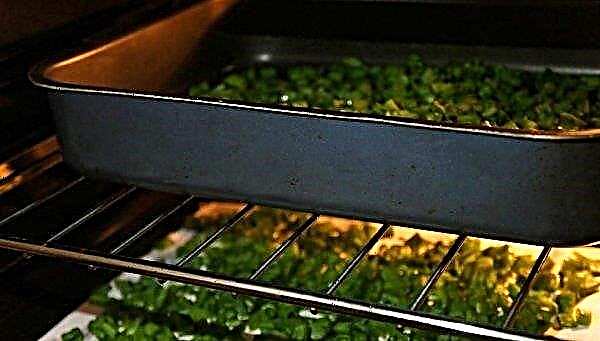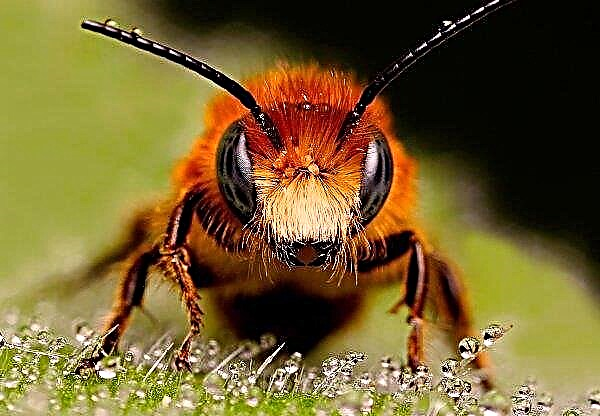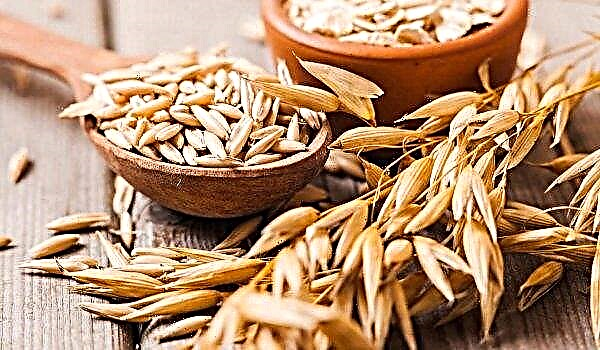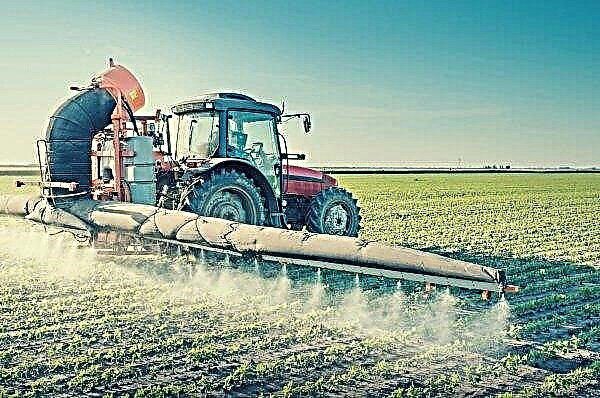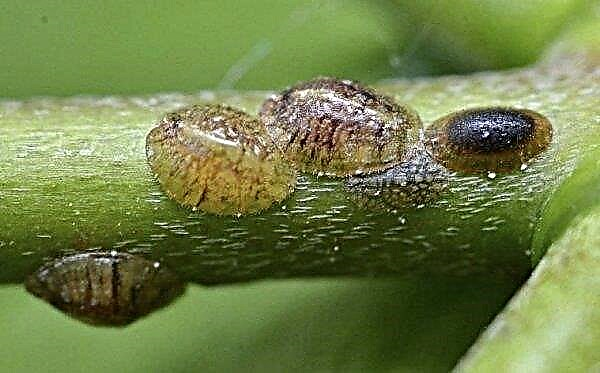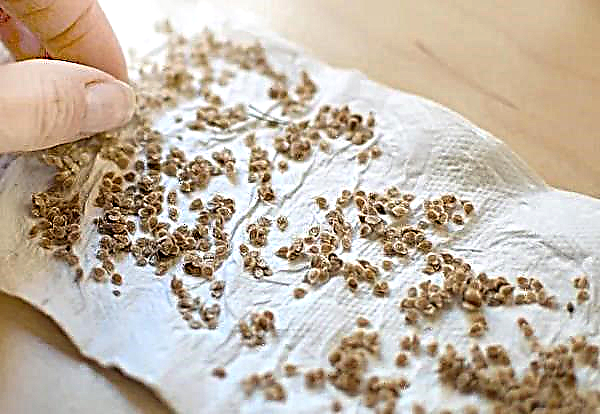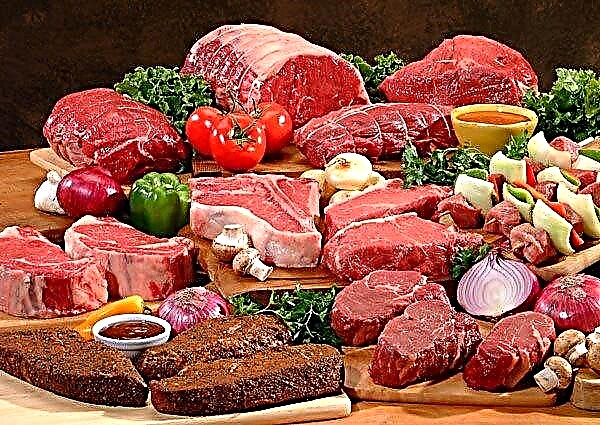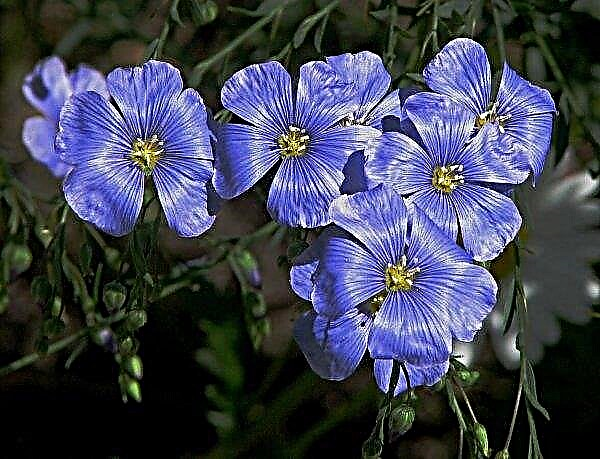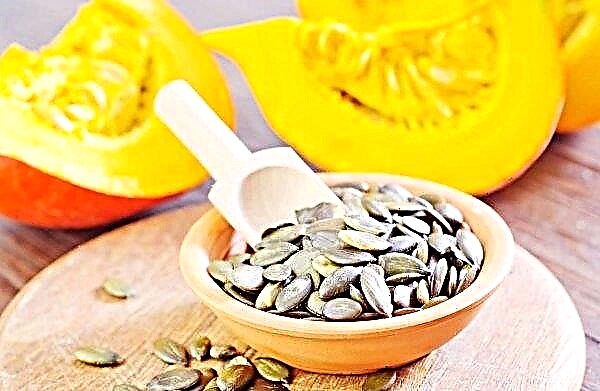The fashion for environmentally friendly products is actively developing, in this regard, the opportunity to grow tasty and healthy oyster mushrooms (oyster mushrooms) with their own hands is of great interest to many. Interest is also fueled by the opportunity to freely buy mycelium, ads for the sale of which are quite common, the high cost of mushrooms and the presence of idle time of greenhouses without use. We will talk about how to properly grow these mushrooms on their own today.
Is it possible to grow oyster mushroom in a greenhouse with your own hands?
To grow oyster mushroom in a greenhouse is not only possible, but also necessary. An indicator of the high quality of these mushrooms is the absence of a leg, and this result can only be obtained in the wild or in a greenhouse with natural light, and the coating material does not matter.
Did you know? Of all the mushrooms, oyster mushroom is most similar to meat in terms of nutrient content.
Cultivation is possible in the presence of such conditions:
- natural light;
- lack of heat;
- high humidity;
- correct soil;
- fresh air access.

Advantages and disadvantages
- The advantages of growing oyster mushrooms in a greenhouse include:
- low costs;
- no need for expensive equipment;
- do not need a large plot;
- protection against infection due to isolation;
- the ability to grow for sale;
- high profitability;
- simplicity of technology;
- confidence in product quality;
- the opportunity to get environmentally friendly mushrooms;
- the pleasure of eating your own products;
- lack of need to license and certify their activities;
- the opportunity to attract family members for care;
- rapid growth of oyster mushrooms;
- the greenhouse will protect your airways from fungal spores, mold and moisture, as opposed to home growing;
- the possibility of saving space thanks to longline cultivation.
- The disadvantages include:
- the use of physical labor to care for mushrooms;
- the dependence of the crop on external factors;
- there is an opinion (unconfirmed) about the need to use respirators and protective clothing in working with mushrooms;
- fungal spores can cause allergies;
- a truly profitable business is possible with a sales market.
Suitable time for planting seedlings in the greenhouse
For planting oyster mushrooms in a greenhouse, the end of summer is best suited, but at other times of the year they can also be grown. Mushrooms can be planted year-round together with other crops (preferably with cucumbers) or in their free time from growing other plants.
In many gardeners, greenhouses are idle in winter, because vegetables require additional lighting and heating, which increases their cost, and for mushrooms these requirements are much lower. Good results are obtained by growing in a greenhouse during a period of high humidity (spring, autumn). The problem can arise in the hot summer, because oyster mushrooms do not tolerate high temperature and stop their life.

Basic requirements for a greenhouse
These mushrooms can be grown in a greenhouse for vegetables or in a specialized greenhouse for mushrooms.
The latter are of the following types:
- two-tier 4-flank Petersburg;
- Greek 7-flank sample 1861;
- Combined 4-flank Moscow gardeners.

- The requirements for a greenhouse for growing oyster mushrooms are:
- It must be warm, because mushrooms need stable heat to grow. You can insulate for the winter by installing a second shelter circuit.
- For growing in winter, additional heating is required, optimally - water type.
- It must be airtight so that drafts do not lead to sudden changes in temperature.
- It is necessary to provide for the possibility of ventilation through the vents or supply and exhaust ventilation (ventilation pipes).
- It should be possible to humidify the air by spraying water.
- It is necessary to provide protection against direct sunlight through the roof - install colored or translucent polycarbonate, make an additional contour from the covering material, install curtains, whitewash the roof.
- To warm the soil in the winter, it is covered with foamed polyethylene with a metallized layer.
- To save space, shelving and shelving are required.
- There are no requirements for sizes, it all depends on the scale of the planned sowing.
Important! The greenhouse, where oyster mushrooms grow, should not be heated by a gas burner, as this dries the air.
Features of growing oyster mushrooms at home
If you want to grow oyster mushroom, you need to familiarize yourself with the technology of planting.
How to prepare seedlings
To plant oyster mushroom, you need to buy mycelium. Prior to planting, it is kept in the same room with the substrate for a day, so that both are of the same temperature.

As a substrate, you can use:
- freshly cut stump;
- non-dried timber;
- a mixture of 45% cereal straw, the same amount of cabbage stalks, 6% of wheat bran, the rest is filled with gypsum or chalk;
- a mixture of 90% sunflower husks, 5% soy flour, gypsum or chalk;
- a mixture of hardwood sawdust with wood shavings (45% each) with 8% rye or wheat bran, gypsum or chalk;
- a mixture of 30% sawdust with 60% buckwheat husk and beer grains;
- a mixture of 85% wheat straw with 13% herbal flour from legumes and chalk.

To protect the future crop from mold, add 10 g of Fundazole or Benlata per 100 kg of substrate, and 2.5 g of Dimilin are taken per 100 kg of substrate to protect against fungus flies and mosquitoes. All components of the substrate should not be larger than 5 cm.
The substrate is processed with hot water: mix all the components, put them in polypropylene bags, lower them into a container with hot water and leave for 5 hours. Then the bags are removed, laid under a slope, put under a load and allowed to drain water. The procedure will be completed when no water is released from the substrate compressed in the hand.
The prepared substrate has the following characteristics:
- humidity - 70–80%;
- temperature - + 25 ° С;
- structure - loose, crumbly.
Hemp and timber, if they are not just cut down, can be soaked for a day in water.
Important! Oyster mushrooms do not grow on the waste of conifers.
Transplanting
If oyster mushrooms are grown in a substrate, then special bags will be required, the dimensions of which are 0.5 × 1 m. On each side of the bag, 12 slots with a diameter of 10 cm are made. A layer of the substrate is added to the bag, alternately with the mycelium slightly crushed by hands and repeating the layers, carefully ramming everyone. Only 1 bag leaves 300-450 g of mycelium. Tied bags are placed in the greenhouse at a distance of 0.5-0.6 m from each other.
When growing on stumps or bars, they need to drill about 8 holes from the top (from the side where the tree grew) and the same amount at the edges, diameter about 2 cm. Mycelium is poured into the holes, well packed, filled with garden varnish or covered with plasticine .
On the ground, dig a hole 5 cm deep, install a stump in it, sprinkle on the sides, water the soil around the stump. Or you can dig a hole, pour sunflower husk, mycelium to the bottom, pour, put a stump on top, sprinkle lightly with soil. The distance between the stumps is not less than 35 cm.
Video: how to grow oyster mushrooms on stumps
Care Rules
In caring for mushrooms, you need to remember about temperature, fresh air, watering and a substrate rich in necessary substances.
Temperature mode
Oyster mushrooms should grow at a temperature in the range of +23 ... + 25 ° С. To stimulate growth, it is recommended 2 weeks after planting, when the substrate turns white, turn off the heating and bring the temperature to +2 ... + 4 ° С. After 2 days, the heating is turned on and the temperature is + 15 ° C.
Low temperature contributes to the slow, but quality growth of mushrooms. They become larger, with short legs. It must be remembered that these mushrooms need access to fresh air, and regularly ventilate the greenhouse.
Did you know? The largest number of oyster mushrooms grown in one place, — 473 pcs.
How to water
Watering is needed drip, it is better to use rain or melt warm water. Water can be sprayed manually or using special equipment. Humidity should be maintained within 75–90%. Watering is not carried out at temperatures below + 10 ° C. If mushrooms are planted on stumps or bars, then water the soil around them.

How to feed
For feeding use waste from the woodworking industry and agriculture:
- sawdust;
- wheat or rye bran;
- soy flour;
- herbal flour;
- beer grains;
- gypsum;
- a piece of chalk.
They are introduced into the substrate during planting.
Harvesting and storage
The first crop appears on the 27-30th day from planting, or about a week after you notice the primordia, small tubercles. With a sharp knife you need to cut oyster mushrooms, carefully collect all the remains of the legs. Not earlier than in a week, mushrooms will grow again. In total it will be possible to collect up to 4 crops in 2 months.

Next, a new mycelium is planted. The harvested crop is poured into a large wooden box 2 m high and transferred to a cold room for blast chilling, and then stored in the refrigerator.
So, you can grow oyster mushroom in a greenhouse, and this process is not accompanied by special difficulties, so even beginners can deal with it. Observing the requirements for the greenhouse and the conditions inside it, anyone can get their own harvest. This option is ideal for those in whom the greenhouse is idle without load in the winter.

